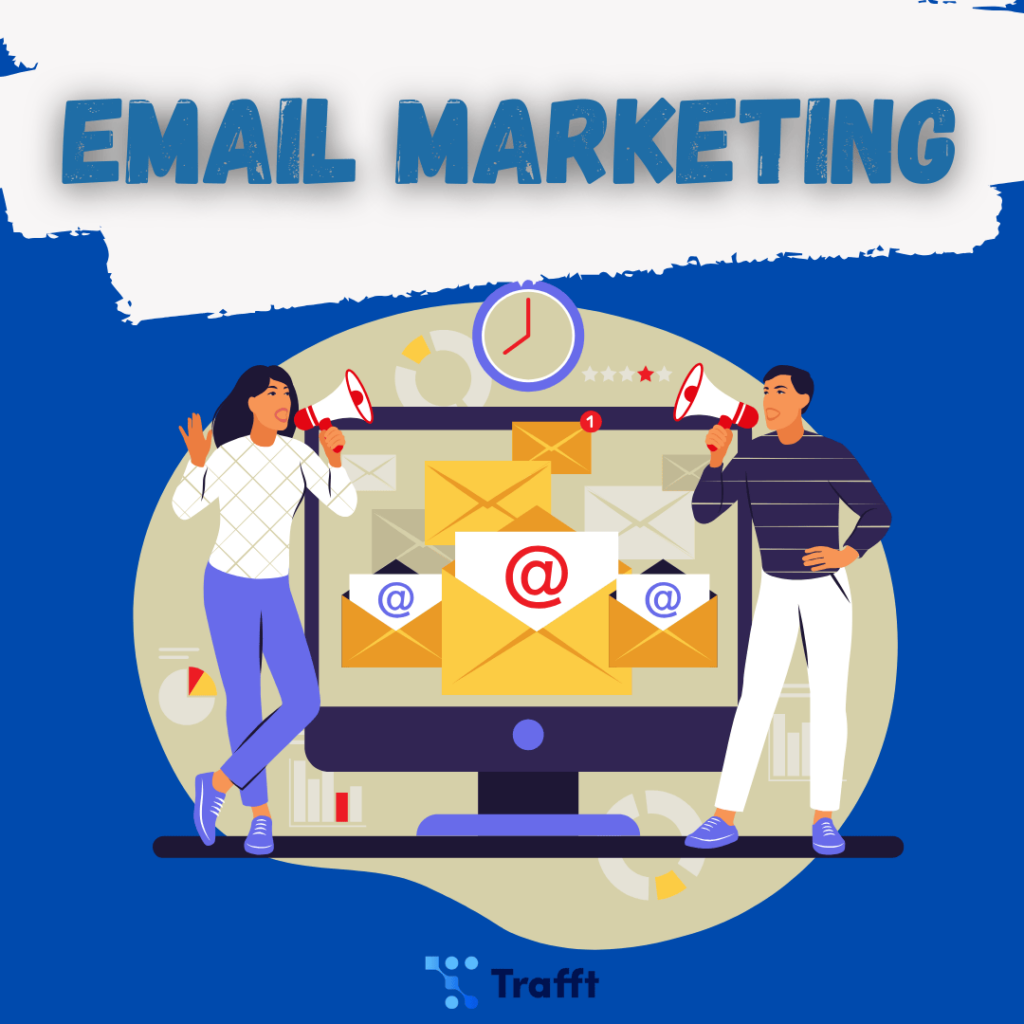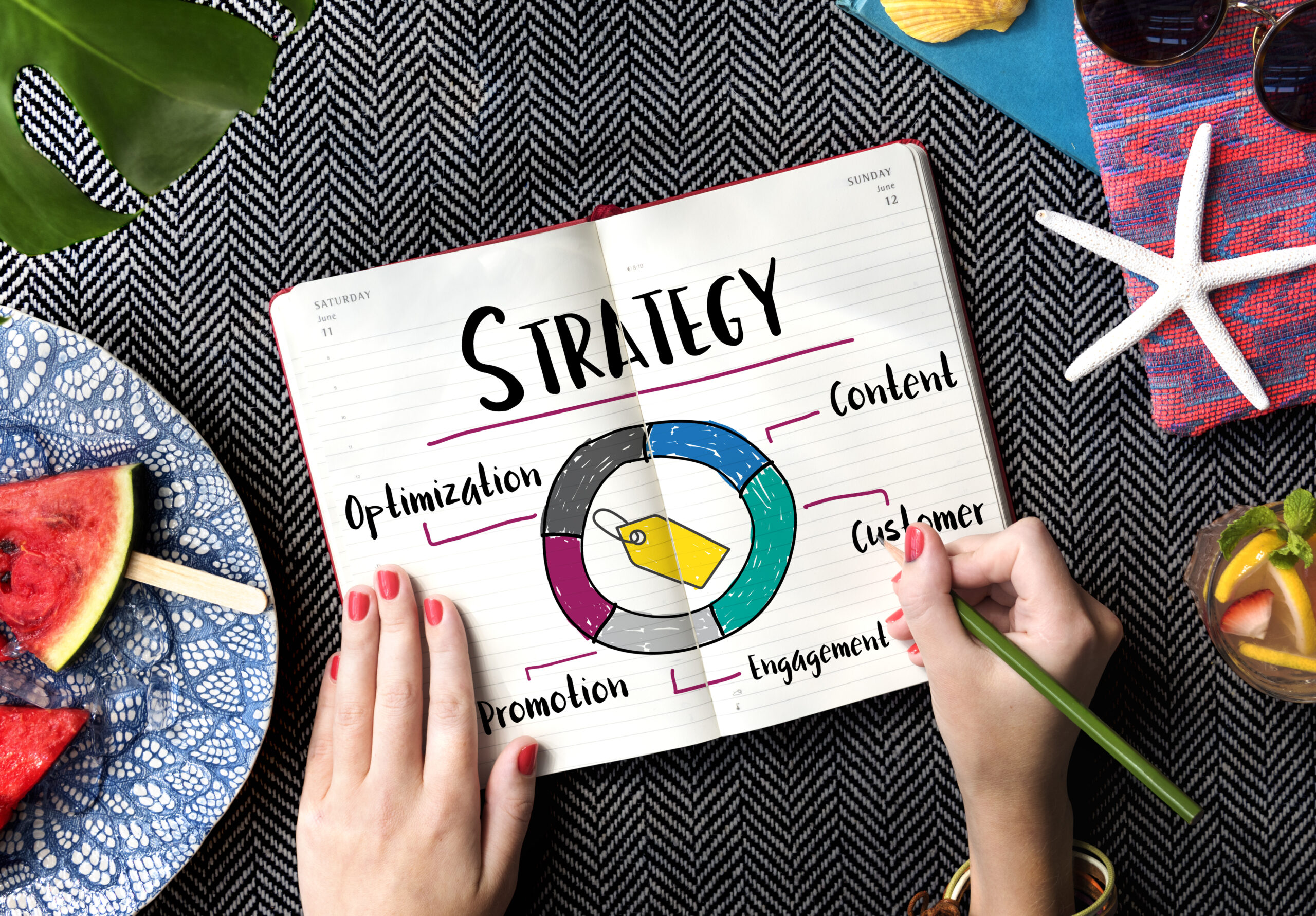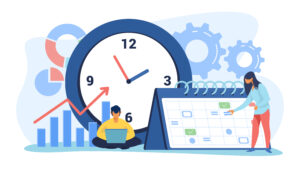Ever wonder how to fill up your appointment book without spending a fortune? Let's talk about email marketing for service businesses. It's a powerful tool for companies trying to increase reservations and give clients a direct line without going over budget.
You get to tailor messages, build stronger relationships, and keep your business front and center when clients are ready to book. And the best part? Email marketing grows with you.
Whether you're an independent professional or running a large service-based company, email marketing delivers content that gets people moving. From hair salons to home repairs, accounting firms to fitness studios - email marketing fits all.
The key to success? Learn about your audience and craft messages that will click with them.
Benefits of Email Marketing for Service Businesses
Email marketing for service businesses is your all-in-one tool. It builds long-term relationships through regular updates, personalized promos, and timely nudges. And as a result, you get trust, loyalty, and a steady stream of repeat bookings.
The fact is, that keeping existing clients happy beats chasing new ones any day. Because, unlike social media or ads, emails land right in your customer's inbox. No algorithms, no timing tricks. It's just your message, front and center.
Because of this, email marketing frequently outperforms other strategies in terms of ROI. Worried about your budget? Email marketing's got you covered.
Plus, you can track everything. Who opened your email? Who clicked? And who booked?
This data goldmine will help you fine-tune your approach, and make every email count.
Create an Effective Email Marketing Strategy
Let's learn how to get the most out of email marketing for service businesses in step-by-step guide to creating your own strategy:
Define your goals
Prior to doing anything, take a moment to sit down and decide what your goals are. It will determine the tone of your email, how often you send them, and what success metrics to use.
For example, if you want to increase bookings, focus on calls-to-action that simplify the scheduling process. As for nurturing leads, consider educational content that builds trust. Basically, keep your business in your clients' thoughts until they're ready to book.
When defining your goals, be precise (and realistic). For instance, set a goal to improve client retention by 10% over 6 months or boost bookings by 15% in the upcoming quarter. These kinds of targeted goals allow you to assess your progress and make wise choices.
Segment your email list
The truth is, not all customers have the same needs or behaviors, and it’s essential to respect their preferences through permission-based email marketing. While some may book weekly, others do annually. Segmenting your list allows you to target specific groups with messages that are most relevant to them. This way, emails are far more personalized, which, in return, leads to higher engagement and more bookings.
Try these segmentation strategies:
- New clients: welcome them with an introductory email and a special offer for their first booking.
- Loyal customers: provide exclusive deals for frequent clients.
- Seasonal clients: offer early access to appointments or promotions for occasional visitors.
- Inactive customers: re-engage them with a "We miss you" campaign.
But these basic categories shouldn't be your limit. You can also segment based on service history, preferences, or email engagement. After all, the more targeted your messages are, the better they'll land!
Craft catchy subject lines
This one is pretty obvious: the subject line is the first thing you see in the email. So, it must be catchy if you want to capture your clients' attention. Keep it concise, interesting, and if appropriate, create a sense of urgency or excitement. However, if you go in this direction, be careful not to overstate or mislead the audience.
Experiment with different styles:
- Questions: "Ready to transform your look?"
- Personalization: "John, we have an exclusive offer for you"
- Urgency: "Limited time: Secure your appointment now"
Keep in mind that most mobile devices display only the first 40 characters of a subject line, so start with the most important information.
Best Practices for Increasing Bookings via Email
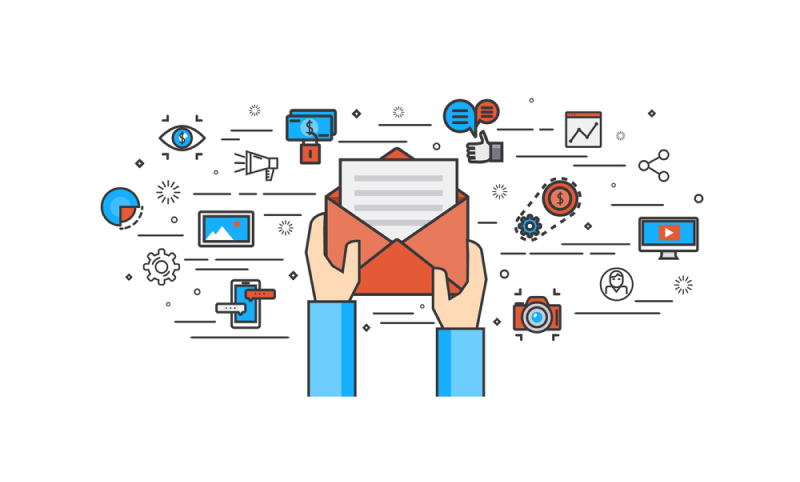
But what about bookings? These are proven techniques to increase bookings with email marketing:
Use automated follow-ups
Automation can become your new best friend in email marketing. Set up emails triggered by specific actions or inactions. Appointment due? Send a reminder. Has a service been completed? Follow up with a thank you note and a prompt to book their next visit.
Without requiring constant manual labor, this email automation will keep your clients engaged. It's perfect for encouraging rebooking, cutting down on no-shows, and maintaining a full schedule.
Regarding new clients, you might want to write a series of welcome emails. Start with a kind introduction, and informative content about your services, then end with a compelling offer. This can help convert one-time visitors into loyal customers, all through an automated process.
Offer time-sensitive discounts and promotions
The truth is, that nothing gets people moving like a ticking clock. Promos or limited-edition sales have the ability to convert a "maybe later" into a "book now". Flash sales and seasonal discounts - these two give clients a reason to act fast.
Try putting something like "24 Hours Left: Book Now, Save Big!" in the subject line. Once you include a countdown timer in the email, you have successfully completed the last step toward achieving a sense of urgency.
Also, think beyond simple discounts. You could offer a complimentary add-on service with booking or create attractive service packages. Offers like these will make you stand out, and encourage clients to book more frequently.
Encourage customer reviews and referrals
Word-of-mouth is marketing gold. After a great service, it's the perfect time to ask for feedback or a review - strike while the iron's hot. Offer a small incentive for referrals.
Here, timing is your everything. Ask for a review shortly after a positive experience when clients are most likely to shower praises. A customer review like this can help convince potential clients to book with you.
To do so, make it as easy as possible. Provide direct links to review sites. As for referrals, give each client a unique code to share. Track who's bringing in business and reward your best ambassadors for the best results.
Use Trafft to increase bookings with email marketing
While email marketing is a powerful way to engage clients and drive bookings, it’s even more effective when combined with a seamless booking system. Trafft takes the hassle out of managing appointments, allowing you to focus on crafting emails that convert.
With Trafft, you can integrate a booking link directly into your email campaigns, simplifying the scheduling process for your clients. Whether you're offering a special promotion, sending out reminders, or following up after a service, Trafft lets clients book instantly, without any back-and-forth communication.
Here’s how Trafft enhances your email marketing strategy
- Simple integration: Share your booking website created with Trafft in your emails, offering one-click bookings right from your messages. Clients won’t have to navigate elsewhere to secure their spot.
- Automated reminders: Combine the power of email automation with Trafft’s reminder feature to cut down on no-shows. Automated email reminders can be triggered through Trafft, ensuring clients never forget their upcoming appointment.
- Real-time availability: When clients click through your email to book, Trafft shows them real-time availability. This eliminates the friction of scheduling and increases the likelihood of immediate bookings.
- Flexible time zones & services: If your business serves clients in different time zones or offers multiple services, Trafft handles all that complexity. This is especially valuable when segmenting your email list based on client preferences and sending tailored promotions.
By incorporating Trafft into your email marketing campaigns, you’re providing a smooth, professional booking experience that turns email opens into actual bookings. But that's not all!
To maximize your email marketing efforts, it's important that your booking system works seamlessly with your email platform. That’s where Trafft really shines. Trafft integrates effortlessly with popular email marketing tools like Mailchimp, SendFox, and Acumbamail, helping you take automation and personalization to the next level.
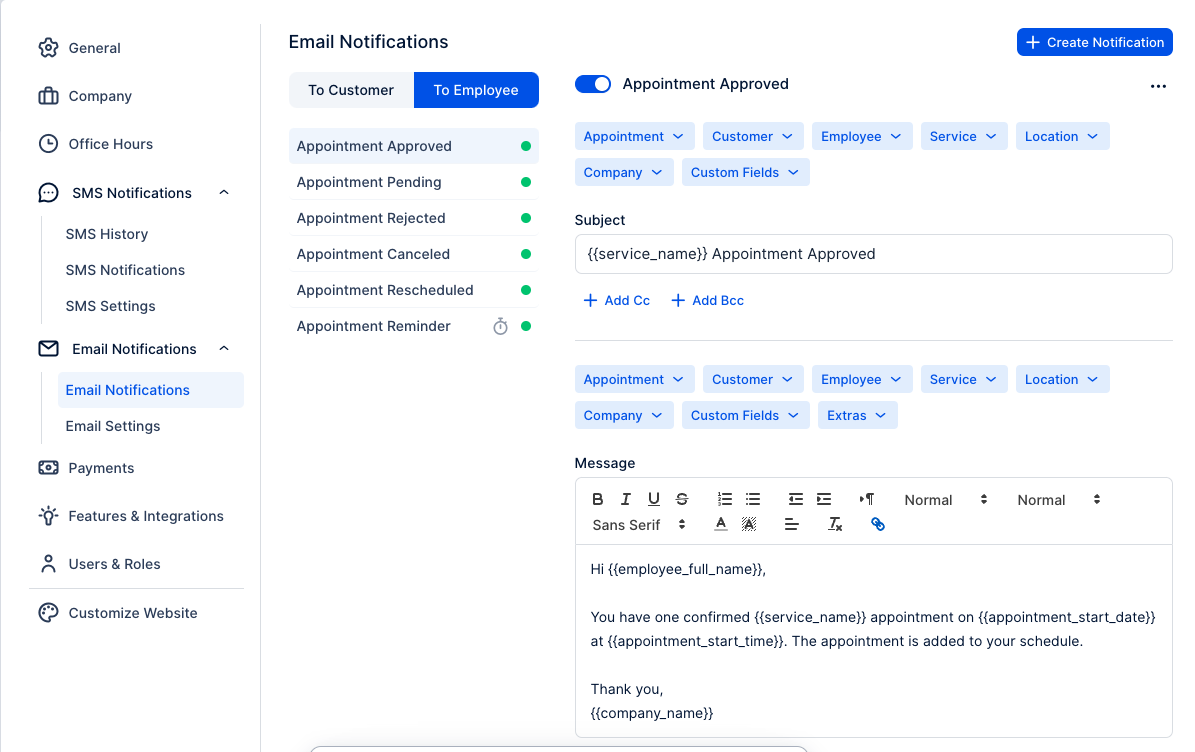
- Mailchimp Integration
With Mailchimp, you can easily segment your audience and send tailored emails that include a Trafft booking link. Whether it's a special promotion, a reminder, or a follow-up email, Mailchimp's robust automation combined with Trafft’s real-time booking system ensures clients can book with one click. - SendFox Integration
If you're using SendFox for simple, effective email campaigns, Trafft's integration makes it easy to embed booking options directly into your messages. Whether you’re sending newsletters or follow-up emails, clients can schedule their next appointment without leaving their inbox. - Acumbamail Integration
For businesses leveraging Acumbamail, Trafft provides a seamless booking experience within your email campaigns. Schedule emails with Acumbamail's automation tools and embed Trafft's booking feature to streamline the reservation process, keeping your calendar full with less effort.
With Trafft integrated into your favorite email marketing platforms, you’re equipped to run smooth, automated email campaigns that drive more bookings and keep clients engaged.
How to Analyze Your Campaign’s Performance
But is email marketing for service businesses yielding results in your case? Here is how to find out:
Track open rates and click-through rates
Numbers tell stories. So, keep an eye on open rates and click-through rates (CTR). High opens but low clicks? Your subject line is a winner, but your content requires some additional work. Low opens? Time to spice up the subject lines.
Use tools like Google Analytics or your email platform's built-in stats. Regular check-ins can help you fine-tune your approach and boost bookings over time.
Optimize based on feedback
Listen to your clients closely. Sometimes they can tell you more than any analytics tool can. You're getting first-hand insights into what works and what doesn't. Certain offers or email formats that are particularly popular? Do more of those. Some of the emails not performing so well? Investigate why and adjust your strategy.
Keep a close eye on unsubscribe rates. If you notice a spike after a particular campaign, it may indicate that something didn't click with your audience. Use this feedback to refine your approach and maintain a healthy email list.
Email Types That Boost Bookings
Welcome emails
First impressions always play if not the biggest role in how your audience will perceive you further. So, when someone joins your email list, make them feel valued with a warm welcome. Introduce your business, set clear expectations, and consider offering an incentive for their first booking. Works every time.
You can go even beyond a simple greeting! Inform new subscribers about what they can expect. How often will you send emails? What type of content will you share? Give them good reasons to look forward to your messages.
Follow-up emails
Stay on your clients' radar. After an appointment, send a thank you note and ask for feedback. When it's time for their next visit, send a friendly reminder.
Don't forget to add value to these follow-up emails. For instance, if a client just had a haircut, share styling tips. After a fitness session, offer nutrition advice. Show clients that you care about their overall well-being, not just their booking.
Newsletter
Keep clients updated with regular newsletters. You can highlight new services, share success stories, or offer exclusive promotions.
Mix up your content to keep things interesting. For example, combine promos with educational content and behind-the-scenes glimpses of your business. Your main goal is to make subscribers look forward to your emails, not just receive them.
Conclusion
Email marketing for service businesses is a direct ticket to more bookings and stronger client relationships. From smart automation to compelling promotions, it helps you stay connected with clients and encourages them to return.
Remember that effective email marketing for service businesses is an ongoing process. Hence, keep improving, testing, and paying attention to your audience. You can turn your email list into your most powerful tool for business growth with just a little creativity and patience.
But above all, put your clients first. The most effective email marketing has the tone of a trustful advisor rather than a salesperson. If you add value to each message you send, you'll not only get more appointments, but you'll also gain a devoted client base who look forward to hearing from you.
Ready to get started? Your next booking could be just one email away!

